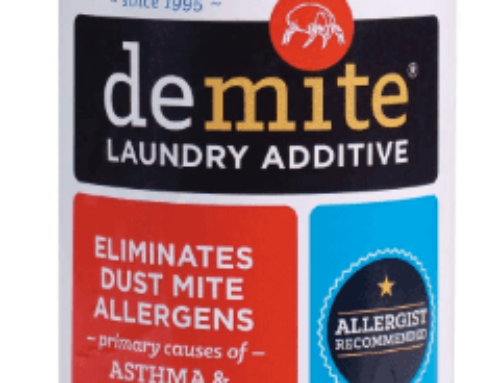Table of Contents
When you’re choosing beddings like a duvet cover, pillowcase, or blanket, the type of fabric matters for dust-mite prevention. It isn’t all about thread counts but the pore size of the fabric is equally, if not more important.
What Thread Counts and Pore Size Block Dust Mites?
To block the entrance of house dust mites, doctors and researchers suggest getting a premium fabric with more than 230 thread counts. And the pore size of the fabric should be less than 10 microns. This pore size prevents the entry of house dust mites and the majority of other allergens. Ideally, it is best to find a fabric with a pore size of 6 microns, as too small a pore size may have reduced breathability.
In general, a high-quality mite-preventing fabric must have the following characteristics,
- More than 98% allergen permeability
- Tightly woven with pore size between 2 to 10 microns
- Less than 4% of dust leakage
- Have thread count higher than 230
Does Silk Repeal Dust Mites?
Yes, silk is an excellent hypoallergenic fabric. Silk fibers have a natural tendency of keeping the worm protected from the harsh outside environment and predators like dust mites. These silkworms spun the silk fibers around them in the form of the cocoon as shelter.
Silk fibers contain 20 to 30% sericin protein which keeps the fibers attached and also protects the cocoon from allergens including dust mites. Therefore, silk fabric repels dust mites and also help in reducing allergic reaction.
According To Science, Which Anti-Dust Mite Fabrics Work?
According to the researchers, the best anti-allergy fabric is the one with the smallest possible pore size. The too-small pore size of the fabric is typically achieved through precision micro-weave technology which turns the fabric into hypoallergenic. This technology is generally used on cotton, linen, and polyester.
Research published by the researchers of Asthma Centre Heideheuvel, Hilversum, in 2002 suggested that using anti-allergic fabric on bedding products significantly reduced further increase in the allergic reaction. This fabric was made with a combination of Polyester and polyamide.
Moreover, the anti-allergy fabric must not be coated or plasticized as it feels uncomfortable, noisy, and also has less breathability.
Hence, scientifically the most effective anti-allergy fabric has the following characteristics,
- Hypoallergenic
- Does not contain chemicals
- Not coated or plasticized
Which Types of Fabric To Avoid?
As the size of the larva of the mite is approximately 20 microns in width and about 50 microns in length, it is recommended to avoid any fabric with more than a 10-micron pore size. As a fabric having a greater pore size will give a free gateway to the larvae to penetrate and grow further.
This can be any fabric including linen and cotton, if not specially made by using precision micro-weave technology.
To make this easy to understand, just one gram of dust can be home to more than 500 dust mites. Simply avoid any fabric that has more than a 10-micron pore size.
Generally, wool is the most vulnerable fabric for dust mites penetration. Because due to its texture and pore size wool has the ability to hold more dust particles, dust mites, and other microbes.
So, What’s The Best Fabric For Dust Mite Prevention?
Cotton, linen, and polyester are known to be a great fabric that block dust mites, provided that they are woven with small-enough pore size. With that said, the mites may still gather on top of the fabric, which means you’ll need to vacuum, steam-clean, or wash frequently.




Leave A Comment